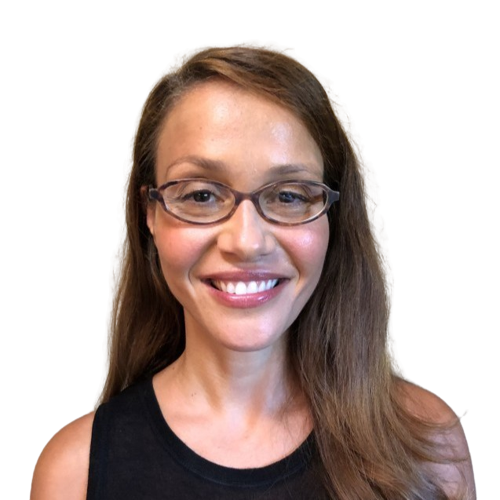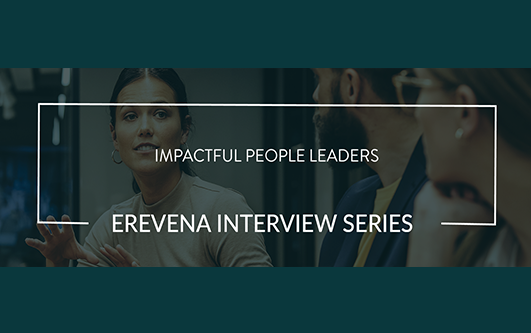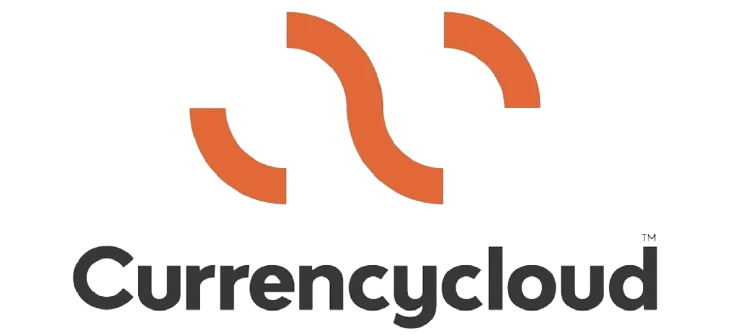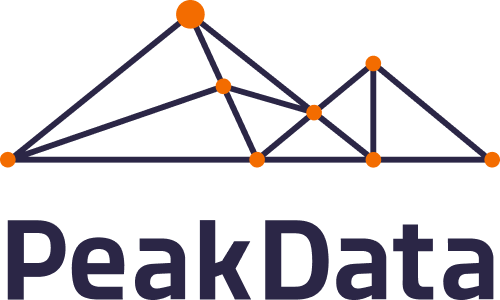From tech law to screenwriting and hedge funds, Valentina Gissin’s journey into people leadership has taken some unusual turns. Now CPO at Citizen, the No. 1 public safety app in the US, she discusses a new interpretation of HR with Erevena’s Chris Warner – and why employee experience remains a differentiator.
You had an unusual journey into people leadership – can you tell us about it?
I started off as a technology and privacy lawyer, did some screenwriting for a while, and was then recruited away from the law by Bridgewater Associates, the world’s largest hedge fund. It’s a unique place to work and I was hired to run security for 165 billion dollars of IP at the time, which was an amazing opportunity. I wasn’t a manager and hadn’t managed people before, nor had I any practical security experience but Bridgewater took a chance on me – they hire based on abilities, rather than on skills.
I joined as a Senior Management Associate, which is someone who does rotations throughout various aspects of the company. I was happily drafted into helping build out and run the core talent program responsible for the Investment Associates – the company’s most critical employee population. It wasn’t such a big leap because I’d discovered (somewhat surprisingly to me) while leading security that I’d developed good ‘people hands’. I found the part of my job that gave me the most joy was developing others and growing their careers.
What did that early foray into HR entail?
I was tasked with building up the Investment Associate (IA) program. It was my first opportunity to think about how I could scale my passion and ability to develop others. Interestingly, nobody used the words HR when talking about the program – it was the IA program and I was the director for it. That was typical Bridgewater fashion in that they didn’t take a lot from outside the company, rather if they had a problem, they said ‘let’s find smart people to solve it’. So, we essentially invented our own talent management with what became an end-to-end talent program, starting with recruitment, through the entire talent lifecycle all the way to outplacement. It was very different from what you would see in most talent management programs. Nobody had a Ph.D in talent and there were no talent people involved. It was essentially me and a group of investment professionals, through which I reported up through the Chief Investment Officer – not into HR.
How did this role pan out?
There was a really close feedback loop between my program and the business community. And on top of that, I had incredible people analytics support both from a data engineer on my team and through partnering with Dave Ferrucci who was applying artificial intelligence to macroeconomic modelling and business insights. When he was with IBM, Dave wrote Watson, the AI that beat Jeopardy. So, I found myself doing things very differently at the two bookends of the HR workflow – start with business orientation at the front end and measure everything with data at the back end. In the first instance, everything I did was to drive business results. If the business was focusing more on emerging markets, we had to structure our talent program to hire, develop and place talent that could support that. It was about becoming a business leader as well as a people leader, someone who really breathes life into the business strategy through the talent strategy. And then on the other end of the spectrum, we’d become as data driven and evidence based as any other P&L function, because that’s really what HR is. When you change those two bookends of the workflow, you change everything in between. Now you build from first principles, not an HR playbook.
How did the data end of the workflow spectrum impact on the bottom line?
We were measuring our success not on how well we’d implemented the HR playbook but on actual outcomes, like undesired attrition, directly measuring engagement, the replacement costs of a bad hire. By removing those costs (through good hires) you can start to save costs, while engagement drives up the bottom line. Almost by accident, I realised I had learned to ‘do HR’ in a way that the entire function was moving. From being a reactive service provider, HR was at an inflection point, moving towards being a strategic P&L driver.
Tell us about your move to Chewy
Leaving Bridgewater was a hard decision but it gave me the opportunity to take what I’d learned and use it at a larger scale. I stayed in HR because I realised that the strategic/P&L approach I’d stumbled upon would be the future of talent. I became head of HR for Chewy’s product, technology, new verticals and the Boston headquarters. And my first mandate was that we needed to grow by 100% in 18 months. So, I had to figure out what the business leaders needed and what direction they were going in – and how we’d achieve this in the absence of most HR infrastructure at the time! Then I took a second role to build out the employee experience, talent management, talent development and organizational development functions for Chewy holistically; there, we made employee experience our north star. We asked how the employee experience could become the tip of the spear for everything we built from an HR perspective.
How did you transform the employee experience?
We began by pitching the idea of productizing HR and making employee experience mirror customer experience. We thought about how customer experience worked and how the function itself operated, for example involving user experience researchers whose job it was to truly understand the customer journey. We then got people from product, design and marketing involved with the idea of viewing the employee and customer experience through a single lens in order to create a truly unique employee experience. We asked what it meant to be part of Chewy – a Chewtopian! It wasn’t easy because there were three very different employee populations across customer service, fulfilment and corporate, for which we wanted to create an umbrella employee experience that was consistent across the company.
What did you do differently?
An important change was to update the way we listened to employees, moving from using a stodgy annual engagement survey to much more frequent listening. We thought about our employees similarly to how our researchers and product people thought about the customer. What journeys did they go on? What were the moments that mattered – and what they needed (versus what they wanted) at those moments. This enabled us to craft a unique approach to the talent delivery model at Chewy. To go back to my earlier point about productization, we wanted to be more of a function delivering people products that were fun and engaging to users rather than services that required a 20-page job aid every time you open something to click. You don’t do that when you customer clicks on something new, so why would you do it for your employees? It was about making the experience of engaging with HR systems, such as the performance management process or a leadership development program, an incredible employee obsessed experience reflecting the company’s external customer obsession.
How did you deliver a consistent experience to the different employee populations?
We very much wanted the experience to feel the same but recognized that the processes by which the different segments engaged with an HR product, such as the performance review, needed to be adapted to the different work environments. A good example of this is when we started measuring the employee pulse more frequently throughout the company. Some of our people, such as those in customer service and corporate functions, were email-enabled. Others, specifically in our fulfilment centre, did not have email and had to be pulled off the floor to fill out the pulse surveys, so their experience was inconsistent with the others. To address this, we bought tablets to pass around so fulfilment employees could take the survey in a way that was just as convenient as the e-mail version.
What shaped your next move in people leadership?
I couldn’t be more grateful to the CEO and CHRO at Chewy for the incredible opportunities they gave me. In particular, my hybrid role meant that I experienced what it was like to build at the corporate level as well as within a smaller structure that felt like its own company in some ways. I realised I loved the strategic talent and employee experience space, as well as the ability to move fast. But I was still ultimately working for a big corporation and decided that I wanted the opportunity to build in that really lightweight, fast, no friction way as a Chief People Officer able to focus on the strategic part of people. And it was a really hot market, so it was a fun time to go on a CPO search.
What were your search criteria when you joined Citizen?
I was looking for several things. First, and foremost, I was looking for a mission driven company. Second, I appreciated the importance of the click between the founder/CEO and the CPO. So, I was looking for someone who had either a shared vision with me about what the people function was and what it was going to do over the next two to three years or, at a minimum, a deep understanding that the people function is a strategic function and not your grandmother’s HR.
Third, I wanted to be surrounded by incredibly smart people, tackling big, difficult problems. I also think it’s really important to have fun at work. It’s where we spend most of our time, and so working with people that I could laugh with and have a good time with was really important to me.
Fourth, culture. Was the culture that the founder wanted the same as the culture I believed would drive results? Was it a high-performance, high-care, culture. A high-performance culture that doesn’t care, might have super high standards, super high accountability, and super high expectations, but it won’t make its employees feel valued, cared for, or developed. And they’ll churn.
Finally, was it a culture I could thrive in? For me, candour is important – it’s about open feedback and not hiding things from people. I wanted that candour. I wanted to know if we could have an honest relationship. Was it going to be a very low politics environment where people tell each other to their face what they think about each other and not behind their backs?
How do you assess if a CEO meets your criteria and that you were philosophically aligned?
The vast majority of CEOs these days talk the talk in terms of wanting a strategic people function but how many really go on to walk the walk? To find out, my approach is to adopt the same technique as a candidate that I use as an interviewer. I believe that the more bespoke, the more unusual, the more extreme a particular aspect of your culture is, the less you can use traditional behavioural based interviewing to understand whether you’re speaking the same language. Instead you have to directly test for it.
So, I give a lot of very raw feedback to my interviewer, which reflects my need for candour. I challenge them. I ask about things that they’ve done in the past as a CEO leading people. Then I try to tear those things apart, for example by saying ‘here’s the five things that I think you did wrong’. Of course, I do this in a caring way to help them but I’m also letting them know that ‘this is me’ and it’s how I expect to interact.
On the walk the walk angle, I typically create the scaffolding for a people plan. It’s based on what I have learned about the company and CEO during the hiring journey. It sets out what resources I would need and what I’d want to dismantle in order to build on the things that a company is doing well. And I’d spell out the things that I think are being done in a way that’s not serving the business because they’re random or not aligned to any people strategy. It’s almost a test case and this is where the deal is likely to fall apart in eight times out of ten! Why? Because in those instances what they’re looking for is not an assertive, business focused people person who talks about numbers, but rather their perception of a traditional HR leader.
How is the role of people leader evolving with the move towards a more autocratic business leadership style, as demonstrated by Elon Musk and Twitter?
You’re talking about whether people leaders need to adapt and work with philosophies that are different to the ones we enjoyed working with just a year and a half or so ago in that ‘hot’ talent market. And it’s definitely possible that the high performance, hire care culture I advocate will change. In fact, there is already a blow back to the more employee-first approach as the power dynamic shifts back to the CEOs and hiring managers. So, we’re starting to see things like companies putting the in-office mandates back on, although I don’t think this particular shift will be permanent.
For me, I think, there would be a real short sightedness if we didn’t continue to focus on the needs of employees and on creating a differentiated, high quality employee experience in our companies. There will always be the ‘A’ players, the 20-xers, the ones who really drive results, and they’ll still be able to go anywhere they want. So, as people leaders, we must cultivate a culture and employee experience that attracts this top talent. That’s not really going to change. Or if it does change, it will change back as companies realise you have to care for, develop, and listen to people for them to join you and stay.
What about engaging current employees as well as new hires?
They’re all part of one system. Your employee value proposition is a promise to your new hires to deliver a specific quality employee experience, unique to that company. You then have to deliver on that promise to keep them. And you must measure the output of that employee experience – what we’ve been calling engagement. Why? Because more engaged employees perform better. We know companies with highly engaged employees are something like 21% more profitable. And so, companies that lose sight of their employee value proposition are not going to do as well.
Even with a shift in dynamic to the CEO’s more performance-oriented organisation, you’re still going to need strategies to retain the best talent. The business needs to ask whether it wants the bare minimum from its employees, or people determined to do everything they possibly can on behalf of the company because they’re engaged and happy. Because that’s the difference between how much impact an employee makes on your bottom line. And in a down market, the bottom line matters more than ever.
Share this article:











